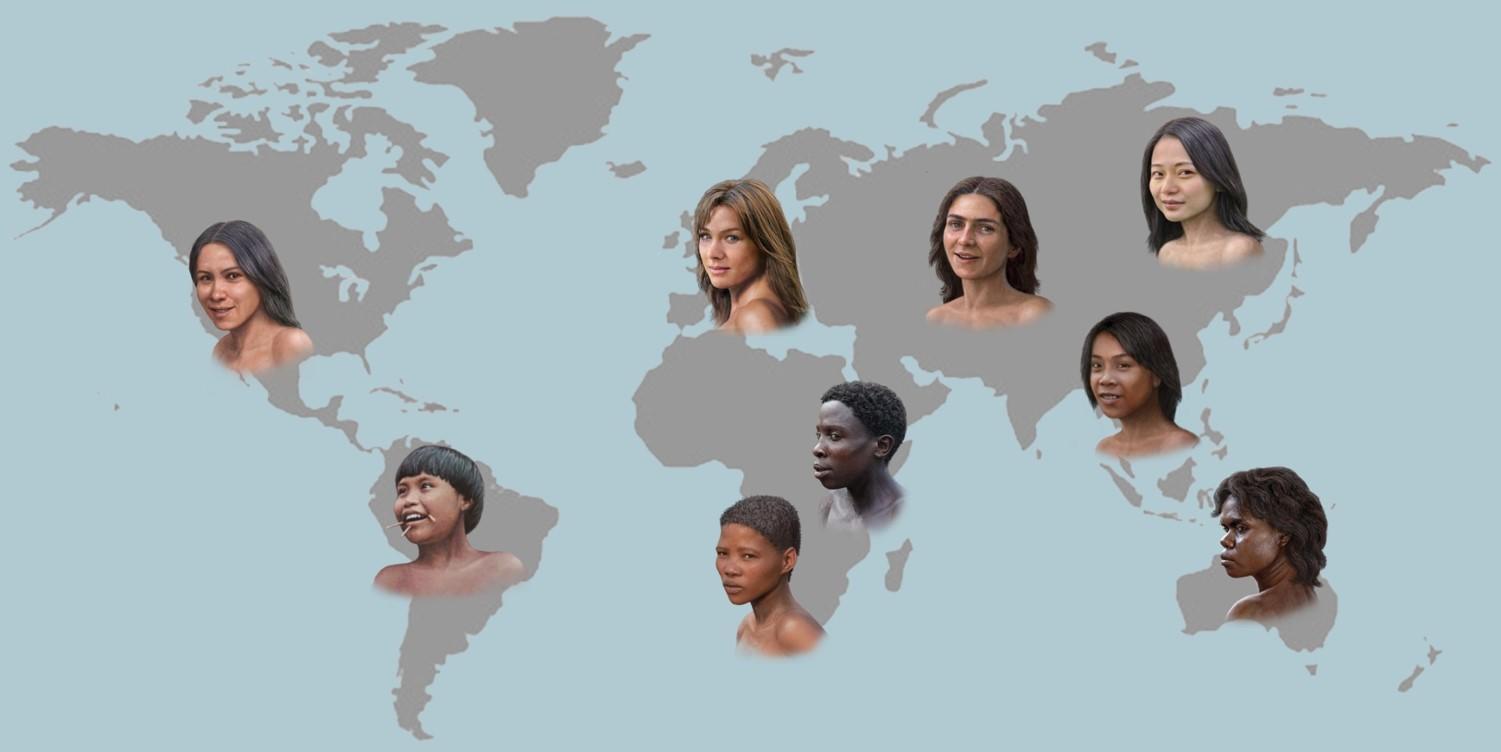There are many reasons why humans have different skin colors. The most obvious reason is exposure to the sun. People who live in sunny climates tend to have darker skin because it protects them from the sun’s harmful rays.
Another reason for different skin color is geography. People who live in colder, northern climates tend to have lighter skin because they need more vitamin D from the sun. Finally, there is a genetic component to skin color.
Some people are born with darker or lighter skin depending on their parents’ genes.
All of these factors contribute to the wide range of human skin colors that we see today. It is truly amazing how such a small difference can make such a big impact on our appearance.
Humans have different skin colors because of the amount of melanin in their skin. Melanin is a pigment that helps protect the skin from the harmful UV rays of the sun. The more melanin in a person’s skin, the darker their skin will be.
People with darker skin typically live in areas closer to the equator where there is more sunlight, while people with lighter skin typically live further away from the equator where there is less sunlight.
There are many different theories about why humans evolved to have different skin colors, but one of the most popular theories is that it helped our ancestors adapt to different climates around the world. For example, people with lighter skin would have been better suited for living in colder, northern climates where there is less sunlight, while people with darker skin would have been better suited for living in warmer, southern climates where there is more sunlight.
Whatever the reason may be, human beings come in a wide variety of beautiful and uniqueskin colors!

Credit: heb.fas.harvard.edu
What Color was the First Human?
There is no one answer to this question as the first human could have had any number of hair and skin colors. However, considering that the majority of humans today have dark hair and skin, it’s likely that the first human also had dark hair and skin. So, if we had to choose a color for the first human, it would probably be something dark like brown or black.
When Did Humans Develop Different Skin Colors?
The earliest human societies were largely egalitarian, with little social stratification. As humans began to domesticate plants and animals and established settled communities, however, some individuals began to accumulate more resources than others. This led to the development of social hierarchies and different skin colors became one way to visually distinguish between people of different socioeconomic classes.
There is no single answer to when or why human skin color began to vary, as there are many factors that can influence pigmentation. One theory suggests that early humans evolved dark skin as a means of protection from harmful ultraviolet (UV) rays, which are more intense at lower latitudes closer to the equator. Another possibility is that light-skinned people developed an advantage in regions where sunlight is scarce, as they would be able to synthesize vitamin D more efficiently.
Whatever the reasons for its initial development, skin color has become one of the most visible and controversial aspects of human physical appearance. In recent years, there has been a growing acceptance of diversity in skin tones, but racism and colorism continue to be major issues in many parts of the world.
What was the First Skin Color of Humans
For years, scientists have been debating the first skin color of humans. The leading theory is that early humans had dark skin because they needed to protect themselves from the harmful UV rays of the sun. However, a new study has suggested that the first human skin color was actually light-colored.
The study, which was published in the journal Science, looked at the genomes of modern-day Europeans and Africans. The researchers found that there are two versions of a gene called SLC24A5, which is involved in skin pigmentation. One version of this gene is found in people with light skin, while the other version is found in people with dark skin.
Interestingly, the researchers also found that all modern-day Europeans carry the light-skin version of SLC24A5, while half of all Africans carry the light-skin version and half carry the dark-skin version. This suggests that early humans were likely to have had light skin, and that darkness only became common after humans began migrating out of Africa into Europe and Asia.
So why did some humans evolve to have dark skin?
The answer may lie in vitamin D. Darker skin protects against ultraviolet radiation from sunlight, but it also makes it harder for our bodies to produce vitamin D. This vitamin is essential for good health, and so those early humans who migrated into sunny regions may have benefited from having darker skin (which would have allowed them to better absorb vitamin D).
Overall, this new study provides an interesting perspective on human evolution and our earliest ancestors. It’s clear that there’s still much we don’t know about how our skins came to be the colors they are today – but studies like this help us piece together this fascinating puzzle.
Conclusion
Our skin color is determined by the amount of melanin in our skin. Melanin is a pigment that gives our skin its color. The more melanin we have, the darker our skin will be.
Skin color is also influenced by other factors such as sunlight and genetics.
Humans have different skin colors because of the different amounts of melanin in their skin. Melanin is a pigment that gives our skin its color.
The more melanin we have, the darker our skin will be. Skin color is also influenced by other factors such as sunlight and genetics.
